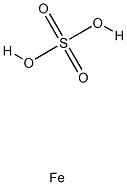Dextran , Mw,40000 , 9004-54-0
Synonym(s):
Dextran;DEXTRAN 40;DEXTRAN 70;Dextran Ladder
CAS NO.:9004-54-0
Empirical Formula: C17H32O10
Molecular Weight: 396.43
MDL number: MFCD00130935
EINECS: 232-677-5
| Pack Size | Price | Stock | Quantity |
| 5g | RMB25.60 | In Stock |
|
| 25G | RMB64.00 | In Stock |
|
| 100G | RMB148.80 | In Stock |
|
| 500G | RMB489.60 | In Stock |
|
| 2.5kg | RMB1812.80 | In Stock |
|
| others | Enquire |
PRODUCT Properties
| Melting point: | 483 °C (decomp) |
| alpha | 198 º |
| Density | 1.00-1.20g/mL |
| refractive index | 185 ° (C=6, H2O) |
| storage temp. | 2-8°C |
| solubility | H2O: soluble50mg/mL, clear to very slightly hazy, colorless to faintly yellow |
| form | Solid |
| color | White to slightly off-white |
| PH | 2 - 10 |
| optical activity | +208 to +233 (formaldehyde) |
| biological source | bacterial (Leuconostoc mesenteroides) |
| Water Solubility | Soluble in water, dimethyl sulfoxide, ethylene glycol and glycerol. |
| Merck | 14,2948 |
| Stability: | Stable. Keep dry. Incompatible with strong oxidizing agents. |
| LogP | -4.259 (est) |
| EPA Substance Registry System | Dextran (9004-54-0) |
| Absorption | ≤0.05 at 375nm in H2O at 10% |
Description and Uses
Dextrans are glucose polymers produced by bacteria linked in
an α-1,6 chain and having an α-1,3 or α-1,4 branch about every fifth residue. The specific
positioning of the branching varies by the bacterium producing it. The molecular weights of these
chains generally are 40 or 70 kDa (dextran-40 and dextran-70, respectively), and the compounds
work via an osmotic gradient similar to the colloids and hypertonic crystalloid solutions.
Dextrans have a longer intravascular
residence time
than albumin, which limits interstitial edema. As with the crystalloids and other colloids, the dextrans
have no oxygen-carrying capacity. Furthermore, because they are bacterial products, the dextrans
have the potential to be potent antigens and induce anaphylaxis.
antiinflammatory veterinary drug
Safety
| Symbol(GHS) |  GHS07 |
| Signal word | Warning |
| Hazard statements | H303 |
| Precautionary statements | P270-P301+P312-P403-P501c |
| Hazard Codes | Xn,Xi |
| Risk Statements | 20/21/22-36/37/38 |
| Safety Statements | 24/25-37/39-36-26 |
| WGK Germany | 2 |
| RTECS | HH9230000 |
| F | 3 |
| TSCA | Yes |
| HS Code | 39139000 |
| Toxicity | LD50 oral in rat: > 3gm/kg |



